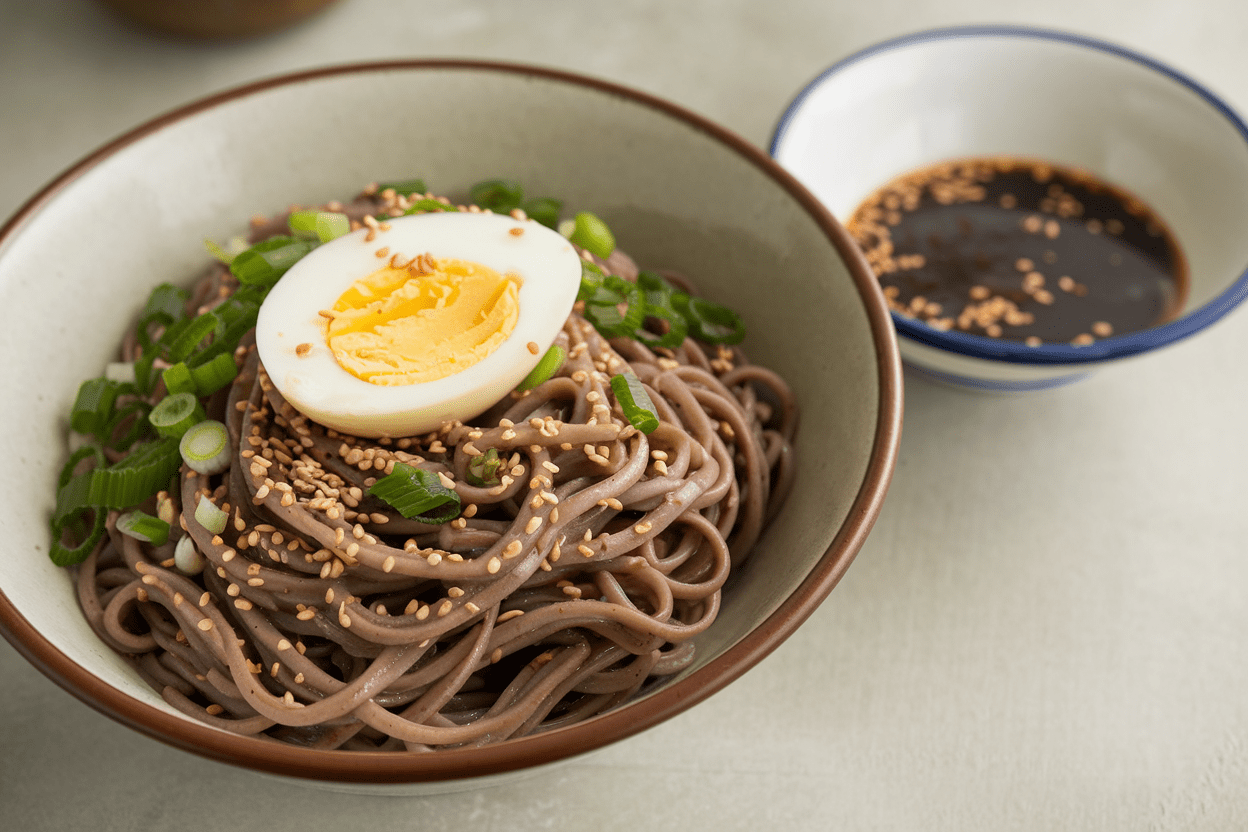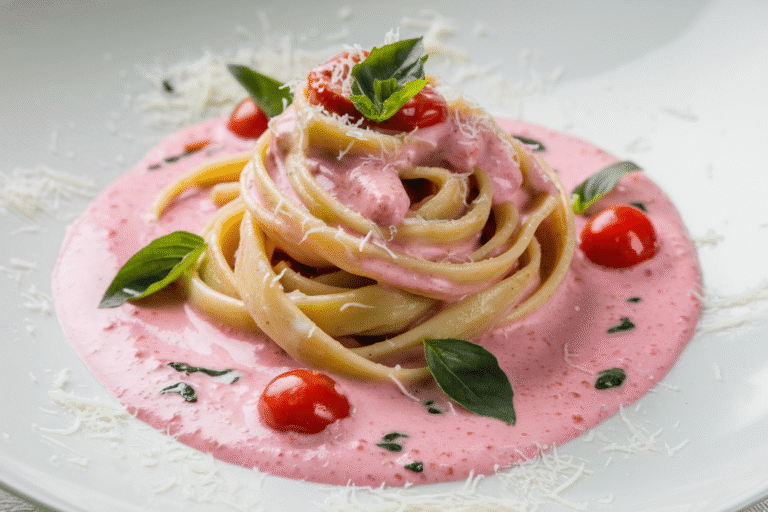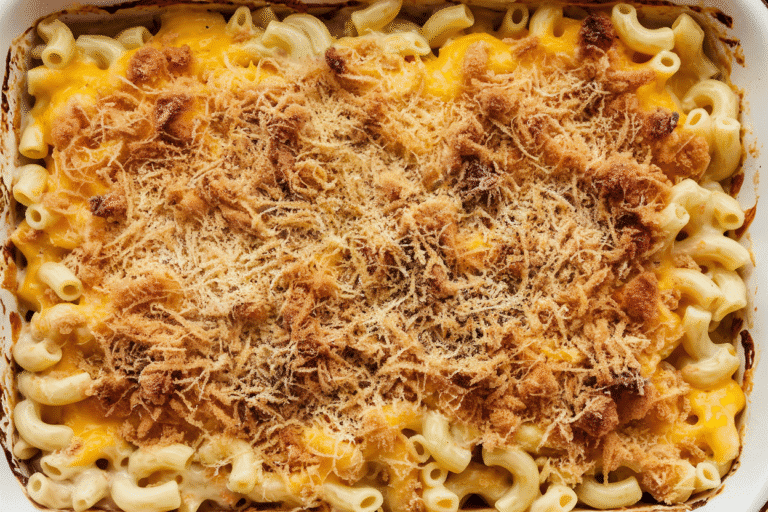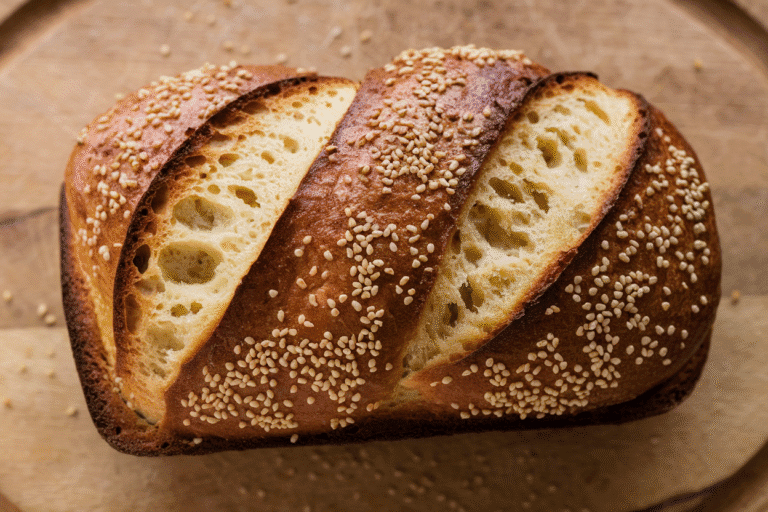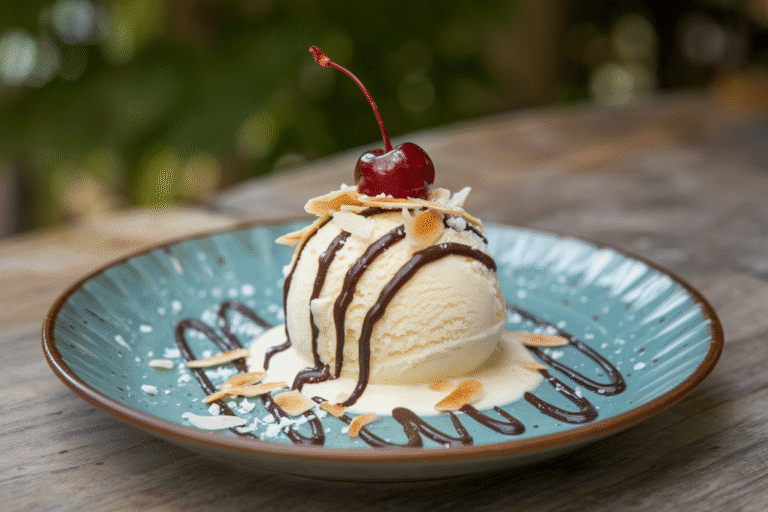This Cold Soba Noodle Recipe Is the 10-Minute Power Lunch You’ll Crave All Week
You want a meal that’s fast, clean, and tastes like you paid $18 for it—but it’s just noodles and sauce you can whip up in less time than it takes to doomscroll. Cold soba is that quiet flex: cool, springy buckwheat noodles dunked in a savory-sweet sauce that makes your brain go, “Wait, why is this so good?” It’s refreshing, it’s balanced, and it doesn’t leave you sluggish. Bonus: looks fancy, costs pennies, and you can scale it for meal prep or a crowd.
Let’s make your fridge the most dangerous place in your house.
What Makes This Special
This isn’t just “cold noodles.” It’s a perfect triangle of flavor: salty soy, sweet mirin, and umami-rich dashi, wrapped around naturally nutty buckwheat noodles. The texture contrast—crisp scallions, punchy ginger, and a silky dipping sauce—keeps every bite interesting. You can plate it restaurant-style with a dipping broth (zaru soba) or toss it all together for a speedy lunch.
Either way, it’s refreshingly light but surprisingly satisfying.
Also, soba noodles cook fast and chill even faster. That means less time at the stove, more time pretending you planned this level of elegance. And while the sauce tastes complex, it’s basically pantry staples having a meeting.
Ingredients Breakdown
- Soba noodles (100% buckwheat if possible, 8–10 oz): Earthy, nutty, and naturally gluten-free if you choose pure buckwheat.
Blended soba (with wheat) is more forgiving and less crumbly.
- Soy sauce (1/3 cup): Provides salt and depth. Use low-sodium if you want more control.
- Mirin (3 tbsp): Gentle sweetness and sheen. If unavailable, use 2 tbsp sugar + 1 tbsp water.
- Dashi (1 cup): The backbone of the sauce.
Make from powder, packs, or kombu + bonito if you’re feeling chef-y. Water works in a pinch, but you’ll miss nuance.
- Rice vinegar (1–2 tsp): Brightens the sauce without turning it into a salad dressing.
- Sesame oil (1 tsp): Adds warmth and aroma—don’t overdo it.
- Scallions (2–3, thinly sliced): Fresh bite and color.
- Grated ginger (1 tsp): Zing that keeps it lively.
- Toasted nori (1 sheet, cut into thin strips): Salty ocean crunch. Optional but wonderful.
- Toasted sesame seeds (1 tbsp): Nutty texture that plays nicely with the noodles.
- Wasabi or shichimi togarashi (to taste): Heat, if you like it.
- Optional protein: Soft-boiled eggs, shredded chicken, tofu, or grilled shrimp.
- Ice for shocking noodles: Non-negotiable for peak texture.
Step-by-Step Instructions
- Make the sauce (mentsuyu): In a small pot, combine soy sauce, mirin, and dashi.
Bring to a bare simmer for 2–3 minutes to blend flavors. Remove from heat, stir in rice vinegar and sesame oil, and chill. You want it cold, not lukewarm.
- Prep toppings: Slice scallions, grate ginger, toast sesame seeds if they aren’t already, and cut nori into thin strips with scissors.
Keep everything ready—cold noodles wait for no one.
- Boil the soba: Bring a big pot of water to a rolling boil. Add noodles, stir immediately to prevent clumping, and cook per package instructions (usually 4–6 minutes). Taste at 4 minutes—soba goes from perfect to mush real fast.
- Rinse and shock: Drain into a colander and rinse under cold running water while gently rubbing the noodles with your hands to remove extra starch.
Transfer to an ice bath for 30–60 seconds until fully chilled and firm. Drain well.
- Serve two ways:
- Dipping style (classic): Twirl noodles into neat bundles, top with nori and sesame, and serve with chilled sauce in separate bowls. Add scallions, ginger, and a dot of wasabi to the sauce to taste.
- Tossed style (weeknight): Toss noodles with half the sauce until lightly coated.
Add scallions, ginger, and sesame. Taste and add more sauce if needed.
- Optional protein: Halve soft-boiled eggs, flake in cooked salmon, or add chilled tofu cubes. Keep it light—this dish is about balance, not domination.
- Finish and eat: Sprinkle with extra nori and a pinch of togarashi.
Slurp proudly; it’s culturally sanctioned.
Storage Instructions
- Noodles: Store rinsed, drained noodles in an airtight container with a light drizzle of neutral oil to prevent sticking. Good for 2–3 days.
- Sauce: Keep the mentsuyu chilled in a jar up to 5 days. It often gets even tastier on day two.
- Do not store mixed: Noodles absorb sauce and turn soggy.
Keep them separate until serving.
- Revive leftovers: Rinse noodles briefly under cold water to plump them back up, then drain and serve.
Nutritional Perks
- Light but satisfying: Soba offers complex carbs that release steadily, so you’re energized without the food coma.
- Protein-friendly: Add egg, tofu, or chicken and you’ve got a balanced macro profile without trying too hard.
- Lower in fat: The sauce is flavor-heavy, not calorie-heavy. A little sesame oil goes a long way.
- Micronutrient boost: Scallions, nori, and sesame add minerals and antioxidants. Small things, big wins.
What Not to Do
- Don’t skip the rinse: If you don’t wash off the starch, you’ll get gummy noodles.
Hard pass.
- Don’t overcook: Soba turns mushy fast. Start tasting earlier than you think. Set a timer—future you will thank you.
- Don’t sauce too early: Mixing noodles and sauce ahead turns the texture sad.
Keep them separate until go-time.
- Don’t drown in sesame oil: It’s aromatic, not a dressing. A teaspoon is plenty.
- Don’t use boiling hot sauce: Warm sauce = warm noodles. You want contrast and chill.
Variations You Can Try
- Spicy sesame soba: Whisk in 1–2 tbsp tahini or peanut butter, 1 tsp chili crisp, and a touch of honey.
Luxurious and fiery.
- Citrus lift: Add yuzu juice or lemon zest to the sauce for a bright, summery finish.
- Veggie crunch: Cucumber matchsticks, radish slices, or blanched snow peas for texture and color.
- Protein upgrades: Miso-glazed salmon, soy-ginger chicken, or marinated tofu cubes—choose your adventure.
- Gluten-free path: Use 100% buckwheat soba and tamari instead of soy sauce. FYI, check labels—some “soba” sneaks in wheat.
- Brothy moment: Thin the sauce with extra dashi and serve the noodles in a chilled soup. Refreshing on heatwave days.
FAQ
Can I use spaghetti instead of soba?
You can, but it won’t taste or feel the same.
If you must, cook spaghetti al dente, rinse thoroughly, and add a splash of sesame oil. The sauce still slaps, but soba’s nutty flavor is half the magic.
What’s the best brand of soba?
Look for Japanese brands with higher buckwheat content (70–100%). 100% buckwheat has amazing flavor but can be fragile; blends are more forgiving. Try a couple and see which texture you prefer.
Do I need dashi for the sauce?
It’s strongly recommended.
Dashi gives umami that water just can’t. In a pinch, use water plus a tiny pinch of sugar and a splash more soy, but the depth won’t be the same.
How do I keep noodles from clumping?
Big pot, rolling boil, stir right after adding, and rinse immediately after cooking while rubbing gently. A light drizzle of neutral oil after draining helps if you’re storing them.
Can I meal-prep this?
Yes—store noodles and sauce separately, toppings in another container, and assemble when eating.
It’s the rare meal prep that still tastes fresh on day three, IMO.
How spicy should I make it?
Dealer’s choice. Add a dab of wasabi to the dipping sauce or sprinkle togarashi over the noodles. Start small; you can always escalate.
Is this served with ice?
Some restaurants place noodles over ice to keep them cold.
At home, a thorough shock in an ice bath and serving on a chilled plate gets you 95% there without the drama.
The Bottom Line
This cold soba noodle recipe is the minimal-effort, maximum-impact meal you’ll keep in rotation. It’s fast, refreshing, and endlessly customizable, with a sauce that tastes chef-level but takes minutes. Keep noodles chilled, sauce on standby, and toppings ready—then flex that “I eat well without trying” energy any day of the week.
